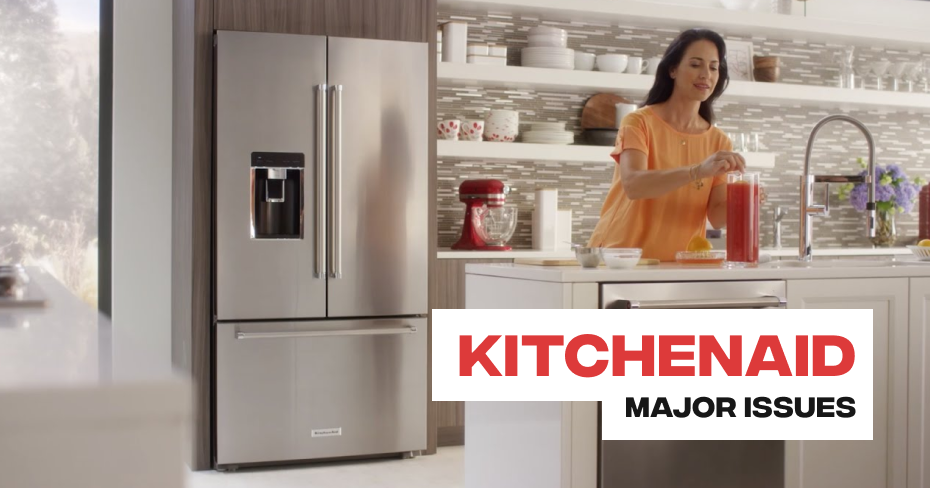
Kitchenaid Refrigerator Ice Maker Malfunctions
Refrigerator ice makers mean a cold beverage is always at your fingertips…unless something goes wrong. Why is my KitchenAid refrigerator ice maker not working? The freezer may be set at the wrong temperature, limiting ice production. Determine the most likely reasons for a KitchenAid refrigerator ice maker not making ice and how to solve the problem.
How to Troubleshoot a KitchenAid Refrigerator Ice Maker Not Working
In some cases, a KitchenAid refrigerator ice maker not working requires a professional part replacement. However, sometimes a quick adjustment or DIY fix is all you need to restore proper function. Use these KitchenAid refrigerator ice maker troubleshooting tips to pinpoint the problem and the right solution.
1. KitchenAid Ice Maker Not Turned On
Before troubleshooting any complications, first make sure your ice maker is turned on. Some model refrigerators have a KitchenAid refrigerator ice maker on/off switch on the top right side of the freezer compartment. Make sure the switch is in the “on” position.
For those ice makers without an on/off switch, a wire shutoff arm on top of the unit turns it on or off. The shutoff arm must be in the down position for the ice maker to be turned on.
2. KitchenAid Freezer Temperature Issues
Your freezer temperature must be within a specific range for the ice maker to produce ice. If the temperature is too low (below 0℉) the ice maker’s ejection components can freeze, leaving them unable to dispense ice cubes. A temperature that’s too high (over 10℉) causes the ice maker to produce smaller or misshapen cubes.
If you find your KitchenAid refrigerator ice maker not working properly, check your freezer temperature. It should be between 0-5℉ for optimal ice production.
3. Ice Maker Water Supply Problem
A KitchenAid refrigerator ice maker not filling with water will be unable to produce ice or will make smaller, malformed cubes. Typically, a water supply issue is responsible when your ice maker doesn’t fill sufficiently.
The following issues can affect your ice maker’s water supply:
- Clogged water filter: A water filter that’s blocked with minerals and debris restricts the flow of water to the ice maker, limiting ice production. Changing your KitchenAid refrigerator water filter every 6 months can prevent clogs. It may need to be changed more frequently if ice production is affected or if ice cubes taste bad.
- Frozen water line: Occasionally, residual water in the ice maker’s water line can freeze, forming a blockage that restricts water flow. Aiming a hairdryer at the water line can melt the blockage, allowing water to flow. Keeping the freezer within the recommended temperature range can also lessen the chance of the line freezing.
- Kinked water line: Kinks in the line can also restrict water flow, preventing ice production. Check the water line for kinks and gently straighten them, if possible. If the water line is damaged, it must be replaced.
- Faulty water inlet valve: The water inlet valve opens and closes to allow water from your home’s water supply to enter the refrigerator. If the valve malfunctions, it may remain closed, prohibiting water from supplying the ice maker. A faulty valve should be professionally replaced.
4. Defective KitchenAid Ice Maker
If you still find your KitchenAid refrigerator ice maker not working after trying these troubleshooting tips, ice maker components may be defective. If the ice maker module fails, the ice maker won’t receive power to open the water inlet valve or eject ice. Similarly, if the mold thermostat stops functioning, the ice maker molds won’t fill with water at the proper temperature.